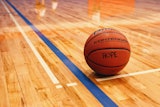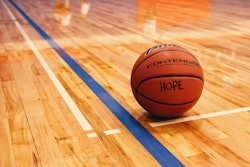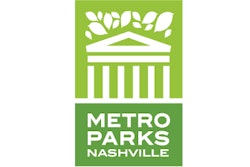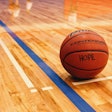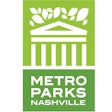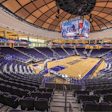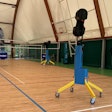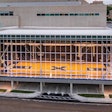While respecting the history of old gyms is important, improvements can still be made to enhance the experience of players and spectators.
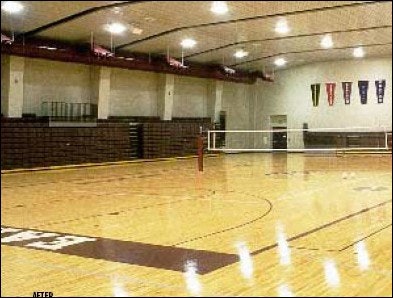
After many years of ball bouncing and bruising action, most gymnasiums start to look their age. Many aging gyms may lose their appeal as places to spend free time, whether the users are high school or college students or public rec center members. Code violations or life safety concerns may also need attention.
Expectations of athletes and spectators are certainly higher today than 30 years ago, and most operators realize they are competing for business and see the need to provide first-rate facilities. With participation in competitive athletics and recreational sports programs at a higher level than ever before, the condition of the facility has never been more important to the success and status of sports programs.
COMMON COMPLAINTS about older gyms typically involve all major components - the sports flooring may not be cushioned, the lighting may be of poor quality, the acoustics may be bad, the sound system may be difficult to hear, the space may be stuffy because of poor ventilation or lack of air conditioning, interior finishes may look worn and the seating may not meet modern standards. All of these have a significant impact on the image and attractiveness of the facility.
Really old gyms-those built prior to the modern focus on safety and risk management, and access to all-may simply be too small, necessitating what is sometimes a difficult and costly expansion. Fortunately, while respecting the history of old gyms is important, improvements can still be made to enhance the experience of players and spectators.
It almost goes without saying that a qualified architect with related experience should be hired to provide complete architectural and engineering services for all phases of the project, including programming, schematic design, design development, construction documents, bidding and construction administration. Architects are thoroughly familiar with the entire design and construction process, and will provide invaluable leadership through all phases of the project.
An architect is usually hired after going through an intense Request For Qualifications (RFQ) and/or Request For Proposals (RFP) process. This process allows prospective architects to understand the proposed project and submit their qualifications, including their approach to the project, the résumés of key team members, past experience, the firm's design philosophy and so on. Armed with architects' credentials, the owner is then prepared to conduct interviews and make an intelligent selection. Choosing the right architect is vital to the success of the project. Not only is ability and experience important, but the architect should also have strong leadership qualities and the right personality to work with the owner's team, since the working relationship could very likely extend for more than a year.
Programming, the first step in the design process, involves determining what facility components need to be included, how big each program space should be and how much money can be spent. Facility owners will need to ask themselves a series of questions regarding the parameters and purpose of their athletic programs. For what purposes besides athletics will the gym be used? Does it need to serve multiple functions to accommodate community meetings, receptions, commencement exercises or school lunch programs? How much seating will be needed to accommodate spectators at basketball or volleyball games? Will the gym be altered to accommodate floor hockey or indoor soccer? Did the old gym utilize an associated stage? Will the renovation plan incorporate the stage, or remove it? How much storage will be needed? Input on programming should be provided by those in the know.
Normally, a building or planning committee is formed and includes representatives from a variety of groups, including administrators, coaches, recreation supervisors, parents, maintenance staff and the end users. If representatives from the entire spectrum are not included, it is likely that something important will be overlooked.
Keep in mind, too, that you may have to deal with more than just the gym. Renovation of an older gym will likely stir up issues of access (Americans with Disabilities Act requirements) and control (security), along with other areas that could affect adjacent spaces or even the entire building. It is up to the architect to determine the total impact of the renovation. If the scope of work surpasses available funds, the project may have to be divided into two or more project phases. Still, it is important to identify the entire scope of work initially, and then develop a list of priorities. The priorities should then be organized into the various project phases.
ONCE PROGRAMMING is complete, and the scope of the project is clearly defined and approved by the owner, schematic design begins. The project schedule will be defined, the budget set and drawings prepared to identify all new work being proposed-in a "big picture" sense. This is the time when all applicable building code, life safety and accessibility issues are identified.
The design development phase follows. Here, the project is defined in greater detail and all elements relating to design need to be discussed, drawn, explained, presented and understood, including the following:
Surfaces. The sports flooring system is of critical importance to the quality of the facility. Don't make the mistake of installing a low-quality surface to save money.
Whether wood or synthetic, cushioned sports flooring has become the standard in gymnasiums, since these surfaces reduce shock and fatigue on athletes. Many older gyms utilized harder surfaces such as vinyl tile installed directly over concrete, which was extremely hard on athletes' joints. Aside from being less expensive to install, vinyl flooring was thought by some to be better suited for multipurpose use. Fortunately, a good cushioned sports floor can also hold up to other types of uses, such as community meetings, awards ceremonies and so on. Those squeamish about the durability of wood should know that tough urethane finishes or gym floor covers are more than adequate to protect floors from abuse.
A wood floor system is typically thicker and more expensive than a synthetic system, but will last longer. Cost of long-term maintenance will depend on the amount of use it receives and the types of functions programmed for the gym.
A new sports floor system can be installed over existing concrete or vinyl flooring. However, the moisture content of existing exposed concrete should be evaluated for the proper installation and performance of wood and synthetic floor systems. If there is too much moisture in the concrete, synthetic surfaces will not properly adhere and the performance of wood flooring will be adversely affected.
Accommodations must also be made to allow for the added thickness of the floor system. Transitions must be made between the higher elevation of the new floor and existing, adjacent floors, usually with a short ramp. Doors may also be affected by installing a new, thicker floor. Adjustments may be as easy as trimming or replacing doors to swing more freely.
Multipurpose courts. The programming phase should have identified all athletic activities that will take place on the gym floor. The program can be extremely multifunctional and include basketball, volleyball, badminton, soccer and other sports, but care should be taken when striping to avoid a confusing layout. In addition, special needs for sports utilizing standards (volleyball, tennis or badminton) or goals (soccer or floor hockey) must be accommodated within the final design.
Stages. A stage can be large or small, and permanent, portable or raised, depending on the needs of the school or community. If a permanent stage is added, there are a number of considerations - access, loading/receiving, storage, dressing, set building, curtains, lighting, sound and sight lines. If a drama group exists, make sure they are included in the programming and design phases.
Lighting. Changes in lighting can't help but affect the overall aesthetics of a gym. For example, while no one would prefer their gym to be a dark space that feels like a cave, boosting existing illumination levels will highlight poor or worn-out finishes within the space. Appropriate lighting, however, is essential to providing a first-rate experience for athletes and spectators. Not only are proper foot-candle levels important, but efficiency and color of light should also be considered. Metal halide, the most common type of highintensity lighting specified for gymnasiums, gives off a white color and is very cost-efficient when compared to incandescent lighting. High-pressure sodium is slightly more efficient than metal halide lighting but gives off a yelloworange color.
Acoustics. Probably the most problematic characteristic of gyms is their lack of sound absorption. Excessive use of hard surfaces such as wood, concrete, metal and glass will contribute to the reverberation problem, producing a very loud space.
Soft, sound-absorbing materials, such as acoustical sound panels, banners and sound insulation, should be specified. Acoustical metal roof decking and other perforated surfaces with integrated acoustical insulation are also effective sound deadeners. Suspended acoustical ceiling systems can be installed if there is enough vertical clearance between the floor and roof structure. (In most cases, 26 feet of clearance from floor to ceiling is required to accommodate basketball and volleyball.) These systems are designed to withstand impact from balls, and can also do a lot to improve the appearance of the gym.
Interior finishes. Fresh paint can do a world of good. Very often, the interior wall finish is painted concrete block. When repainting, it is important to use a good abuse-resistant and easy-to-clean paint, such as epoxy or alkyd enamel in a satin or semigloss finish. If the interior is exposed brick or concrete block and will survive the renovation, cleaning may be necessary. After cleaning, the masonry surface can be sealed to minimize soil buildup, and to make cleaning easier in the future.
Equipment. It may be time to replace worn-out wall pads, basketball and volleyball standards, bleachers and so on. Advancements in the design of these features will make replacement worthwhile, especially if you are dealing with a 50-year-old facility. Additionally, there are better color options today for new equipment, but make sure color choices coordinate with the new interior design scheme.
Basketball standards can be mounted from the ceiling or wall. (There is also a wide range of quality portable models.) Among fixed units, ceiling-mounted standards are normally preferred, especially if it is desirable to retract or move the standards out of the way. Operation can be manual or motorized, and even include the use of a remote transmitter similar to a garage door opener.
Divider curtains are also important to athletic programming and the efficient use of multiple-court gyms. If a curtain does not currently exist, examination of the roof structure will be required to ensure that the curtain can be supported. Curtains typically roll down from the ceiling or roof structure and can be manually operated or motorized. These also come in various style and color options. New bleachers on the market provide many options to choose from.
Retractable, folding systems are ideal if storage space for the folded-up bleachers is available in the gym. If not, consider portable bleachers that can be rolled and stored in an adjacent storage room. Reconditioning existing bleachers, by using vinyl bleacher covers or by enlisting the services of a bleacher refurbishing company, can be an option in lieu of replacement. An existing scoreboard may need to be replaced, or a new one added. If conduit for wiring does not exist, it should be installed for control and power wiring. Locations for wall jacks to connect control equipment should be properly located and coordinated with spectator seating, keeping optimal sight lines in mind.
If a new sound system is in the program, evaluate the various setups for assemblies and functions that might take place. Where will microphone jacks, amplification equipment and controls be located? Is there a need to play music by means other than the publicaddress mode? • Storage. Now is the time to build in storage-lots of it. Adequate storage will be needed for equipment, balls, tables, chairs, bleachers and any number of unexpected contingencies. Perhaps some existing, underutilized space can be rearranged and used for storage, or an addition to the building may be necessary.
Regardless of the situation, if you are investing in gym improvements, it would be wise to give serious consideration to your storage needs. If you can't store it, you either can't have it, or it will be in the way.
Windows. Natural light can be great if windows are properly located and specified. Avoid placing windows where sun will create glare problems. Generally, windows on the north wall will let in a soft, natural light without causing glare. Clerestories on the south, east and west walls, not to mention skylights within the roof, can also be installed, but consideration should be given to using special glass to control glare.
Air handling. Depending on the climate, air conditioning will contribute to extending the functionality and comfort of the facility. Chances are, though, that if the project involves an old gymnasium, no air-conditioning system is currently in place. Installing roof-mounted equipment is the easiest way to add air conditioning, but only if the roof structure can support the equipment.
Cooling aside, good ventilation is also extremely important, and building codes will dictate the percentage of fresh air required. Mechanical air distribution and ventilation is typically handled with metal ductwork located within or below the ceiling. Ducts should be extended sufficiently to provide air to all areas of the gym, and must not conflict with athletic clearance requirements.
Exposed metal ducts should be painted, and can actually add interest as a design element. Round ducts are more visually appealing than standard rectangular ducts, and fabric ducts are another option that can boast some aesthetic and maintenance advantages (they don't require painting).
Accessibility. It is important to be aware of accessibility standards required by the Americans with Disabilities Act or even stricter state and local laws that in some cases take precedence over the ADA. Local government offices will have information on state and local accessibility laws, while ADA accessibility guidelines are available at the U.S. Access Board's Web site at www.access-board.gov. Questions about the ADA and how it applies to specific facilities can be referred to the Access Board's technical assistance hotline at 800/872-2253, or by E-mailing [email protected].
WHILE THE ABOVE presupposes renovation as the most logical alternative in many cases, old gyms that have a historic place in the community deserve extra consideration when renovation or replacement are being contemplated. Before any decision can truly be made, a thorough analysis should be conducted of the existing facilities. A qualified engineer and architect should evaluate all major components, including the structure, exterior wall condition, roofing, windows, and mechanical and electrical systems. The analysis should also outline a cost comparison between renovation and the construction of a new facility. With this process complete, the project team should be able to make an intelligent decision.
Needless to say, there is a lot to think about, and the process can seem overwhelming at times. However, if you assemble the right team, allow enough time, and proceed step by step, any gymnasium renovation project can be a success.













